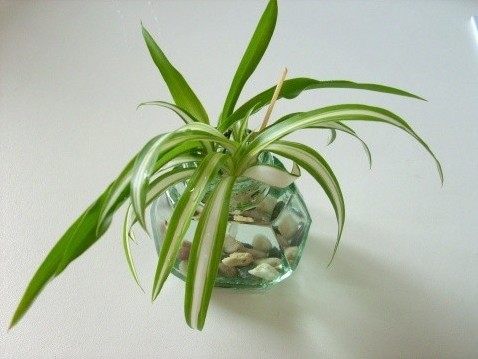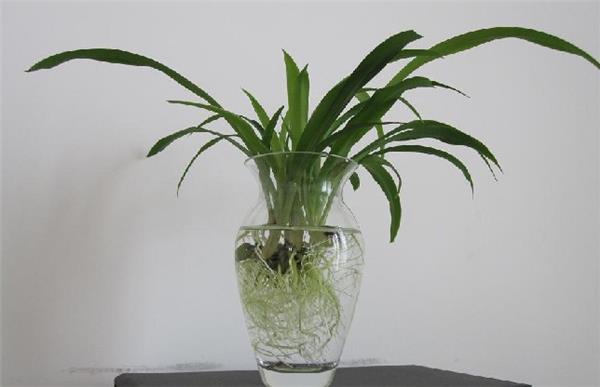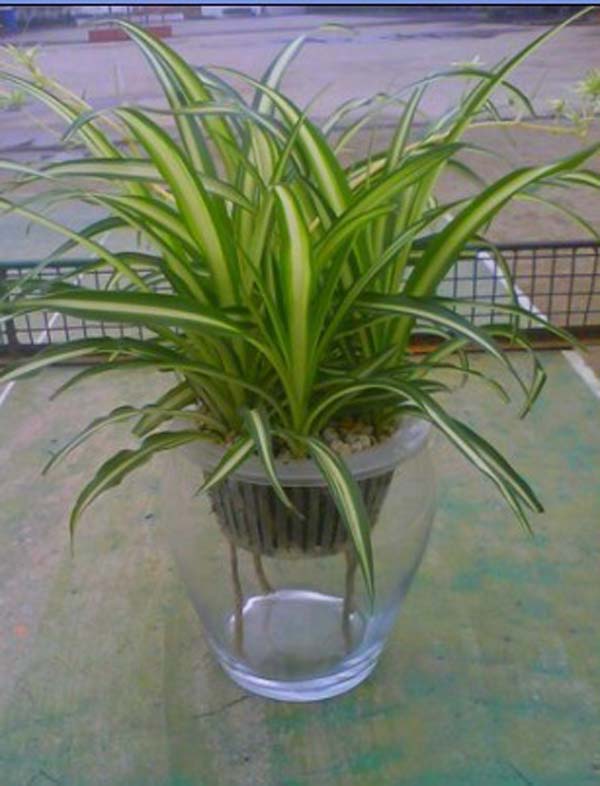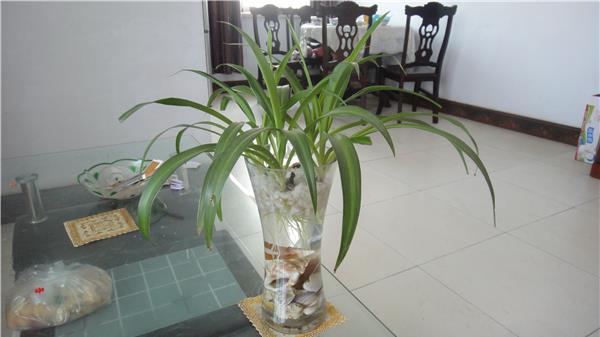[can the orchid be raised by water?] how to raise the orchid by water?
Can hanging orchids be raised in water? Cymbidium with tufted cylindrical hypertrophic fibrous roots and rhizomatous leaves basal, strip to strip-lanceolate, leaves narrow and long, flexible like orchid. Scape extracted from the leaves, slender and curved, white flowers, spring and summer flowering, after flowering into a creeping stem, the top sprouting new plants with aerial roots. The sex prefers warm, humid and semi-overcast environment, and the suitable temperature for growth is 15 ℃ ~ 25 ℃. It should not be less than 5 ℃ in winter.
Can hanging orchids be raised in water?
Sure
Production steps of hydroponics of Cymbidium
(1) remove the graceful potted orchid from the pot and wash the soil.
(2) cut the old root. Cut off the withered and yellow leaves.

(3) insert it into the plastic screen and fill it with blue stone or Maifan stone to increase the permeability and fix the plant. Then put it in a wide-mouth transparent glass bottle and keep it in water.
3. Aquaculture of individual plants
The small Cymbidium with aerial root on the creeping stem was cut from the mother plant and raised in water.
Maintenance and management
(1) when raising the orchid in water, just let the root system of the bottom 1 hand 3 touch the surface of the water, and don't put all the white fleshy roots of the orchid into the water, otherwise the water will cause the root to rot.
(2) the hanging orchid that has just been put into the water is changed once a day, and the frequency of changing water is reduced after taking root.

Daily Management of Water Culture of Cymbidium
① water: when raising Cymbidium in water, just let the root system of bottom 1DUP 3 touch the surface of the water, do not put all the white fleshy root of Cymbidium into the water, otherwise it will cause water to rot.
Just put into the water to raise the hanging orchid to change the water once a day, after taking root to reduce the number of water change. In single-layer container bottle cultivation, water and flower nutrient solution are added every 4 days, and the water is input from the straw until the water is full. Change the water of the double-layer bottle once a week, pour out the water when changing the water, wash the bottle clean, fill it with water and flower nutrient solution, and then put the plastic sieve on the bottle. Ammonia nitrate and potassium dihydrogen phosphate can also be added to the water, including nitrogen, phosphorus and potassium fertilizer, which can promote the growth of Cymbidium. The proportion is 3/1000, and a small amount of penicillin is added to prevent the occurrence of bacteria, and the water is changed once every 10-15 days.
If the root system of Cymbidium has rotted in water, it is best to clean the bottle and the root system of Cymbidium, cut off all the rotten root system, and soak and disinfect it with 500-fold solution of potassium permanganate for 20 minutes. Put the disinfected orchid in a cool place first, and then re-cultivate it with clean water for about 2 days. The environment should be semi-overcast or scattered light, and it will gradually weaken in the shade. It needs to be kept in a sunny place in winter. If the temperature is 20-25 ℃, you need to change the water every 3 days. When the temperature is lower than 20 ℃, it is best to change the water every 5 days or so. When the temperature is higher than 25 ℃, you need to change the water once every 1-2 days. And in each change of water, flush the mucus on the roots with tap water, so that the management can ensure that it will grow well. Pay attention to do not apply fertilizer within 1 month, you can apply less in the future, which is conducive to recovery.

② fertilizer: adding water and changing water in the root and adding flower nutrient solution at the same time, topdressing outside the root is spraying branches and leaves with diluted flower nutrient solution every 3 days.
③ control of diseases and insect pests: if you find any diseases and insect pests, you can use universal powder and water to spray leaves.
④ to promote flowering: the orchid blossoms half a year after potting. Do not spray water on the flowers when they bloom to prevent them from falling early. Cut the flowers from the branches after withering to promote re-flowering.

Can you put the orchid in the bedroom at night?
Hanging orchids can be placed in the bedroom at night. Some people worry that putting plants in the room at night will affect the air. In fact, there is no need to worry about this. A few pots of plants can not affect the normal air breathing of human beings. The most important thing to consider is whether you can give people a sense of pleasure when growing plants indoors. In the bedroom, a place for people to sleep and rest, it is most important to create a quiet and tranquil atmosphere. Put a basin of fresh, elegant, refined hanging orchid, is undoubtedly a very ideal choice.
- Prev

What is the price of sweet-scented osmanthus trees? what's the use of sweet-scented osmanthus trees?
What is the price of sweet-scented osmanthus trees? what's the use of sweet-scented osmanthus trees?
- Next

[can cactus be raised in water] can cactus be raised in water?
[can cactus be raised in water] can cactus be raised in water?
Related
- Wuhan Hospital Iron Tree Blooming Result Was Instantly Frightened by the Gardener Master
- Which variety of camellia is the most fragrant and best? Which one do you like best?
- What is the small blue coat, the breeding methods and matters needing attention of the succulent plant
- Dormancy time and maintenance management of succulent plants during dormancy
- Minas succulent how to raise, Minas succulent plant pictures
- What are the varieties of winter succulent plants
- How to raise succulent plants in twelve rolls? let's take a look at some experience of breeding twelve rolls.
- Attention should be paid to water control for succulent plants during dormant period (winter and summer)
- Watering experience of twelve rolls of succulent plants
- Techniques for fertilizing succulent plants. An article will let you know how to fertilize succulent plants.

